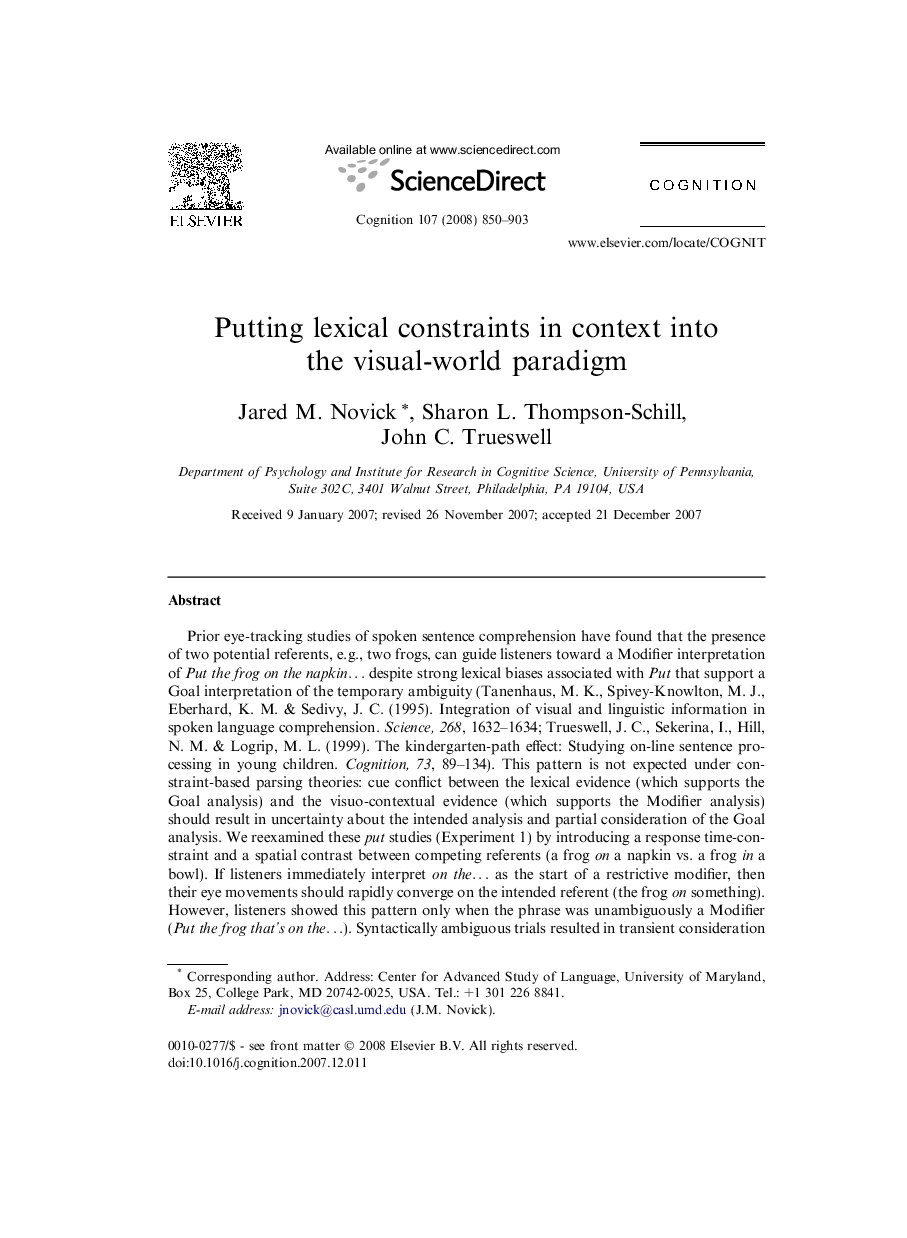| کد مقاله | کد نشریه | سال انتشار | مقاله انگلیسی | نسخه تمام متن |
|---|---|---|---|---|
| 927358 | 921971 | 2008 | 54 صفحه PDF | دانلود رایگان |

Prior eye-tracking studies of spoken sentence comprehension have found that the presence of two potential referents, e.g., two frogs, can guide listeners toward a Modifier interpretation of Put the frog on the napkin… despite strong lexical biases associated with Put that support a Goal interpretation of the temporary ambiguity (Tanenhaus, M. K., Spivey-Knowlton, M. J., Eberhard, K. M. & Sedivy, J. C. (1995). Integration of visual and linguistic information in spoken language comprehension. Science, 268, 1632–1634; Trueswell, J. C., Sekerina, I., Hill, N. M. & Logrip, M. L. (1999). The kindergarten-path effect: Studying on-line sentence processing in young children. Cognition, 73, 89–134). This pattern is not expected under constraint-based parsing theories: cue conflict between the lexical evidence (which supports the Goal analysis) and the visuo-contextual evidence (which supports the Modifier analysis) should result in uncertainty about the intended analysis and partial consideration of the Goal analysis. We reexamined these put studies (Experiment 1) by introducing a response time-constraint and a spatial contrast between competing referents (a frog on a napkin vs. a frog in a bowl). If listeners immediately interpret on the… as the start of a restrictive modifier, then their eye movements should rapidly converge on the intended referent (the frog on something). However, listeners showed this pattern only when the phrase was unambiguously a Modifier (Put the frog that’s on the…). Syntactically ambiguous trials resulted in transient consideration of the Competitor animal (the frog in something). A reading study was also run on the same individuals (Experiment 2) and performance was compared between the two experiments. Those individuals who relied heavily on lexical biases to resolve a complement ambiguity in reading (The man heard/realized the story had been…) showed increased sensitivity to both lexical and contextual constraints in the put-task; i.e., increased consideration of the Goal analysis in 1-Referent Scenes, but also adeptness at using spatial constraints of prepositions (in vs. on) to restrict referential alternatives in 2-Referent Scenes. These findings cross-validate visual world and reading methods and support multiple-constraint theories of sentence processing in which individuals differ in their sensitivity to lexical contingencies.
Journal: Cognition - Volume 107, Issue 3, June 2008, Pages 850–903